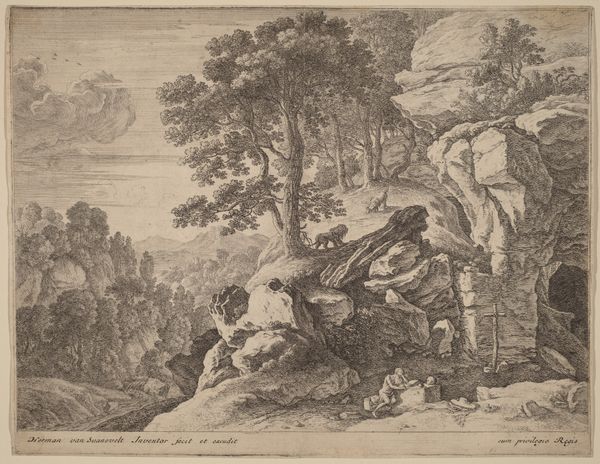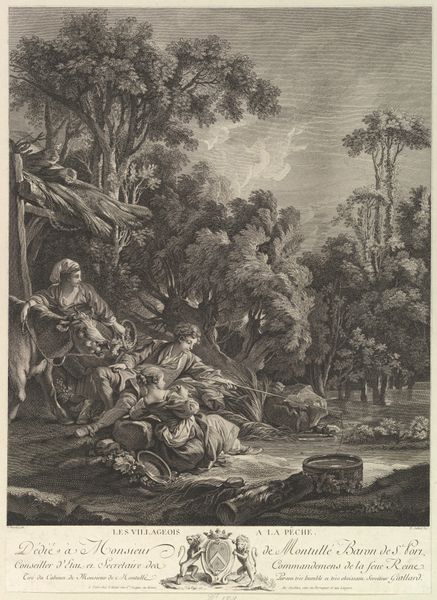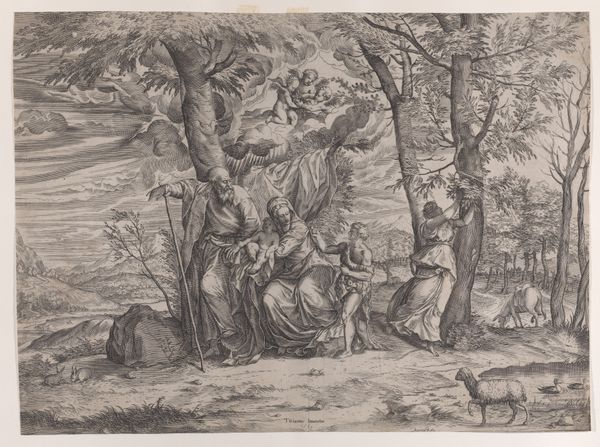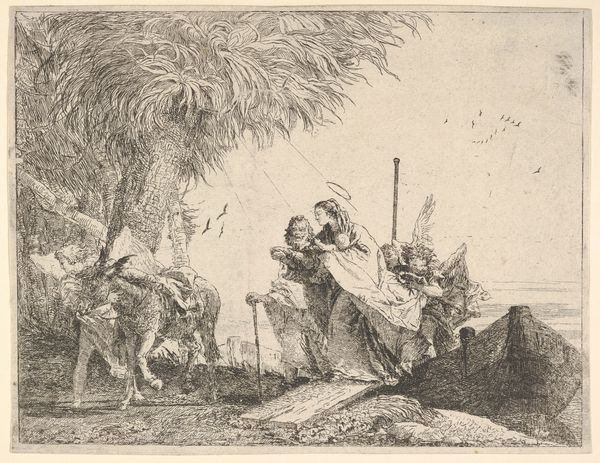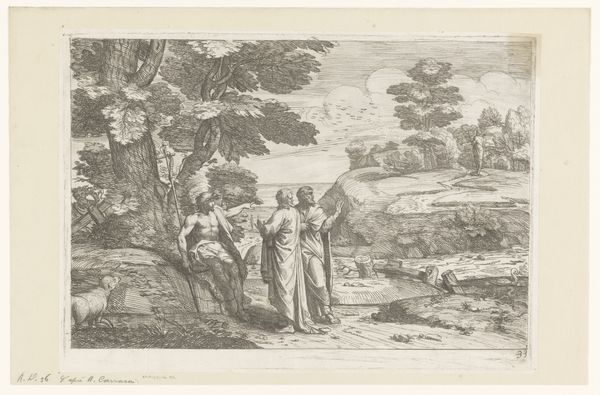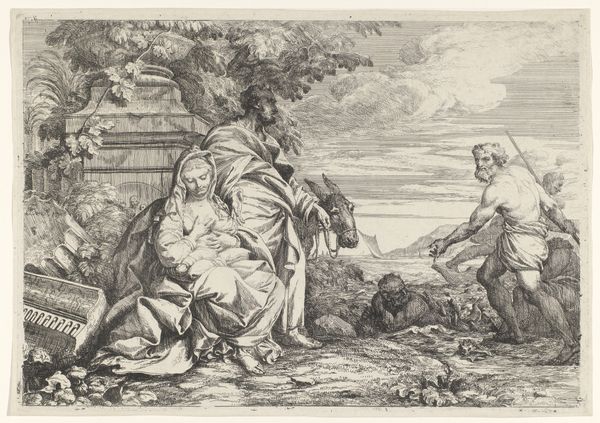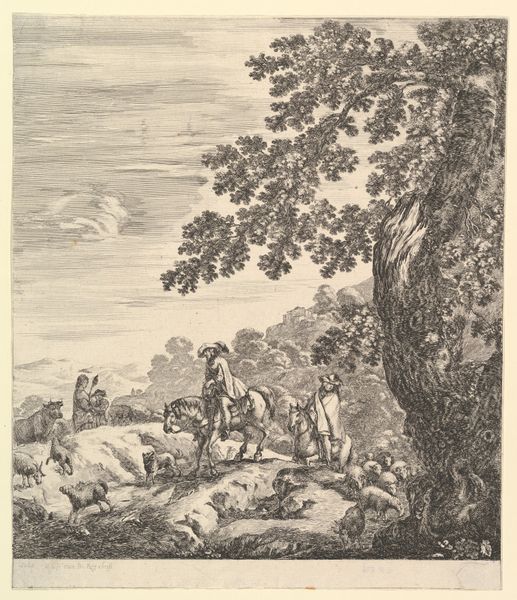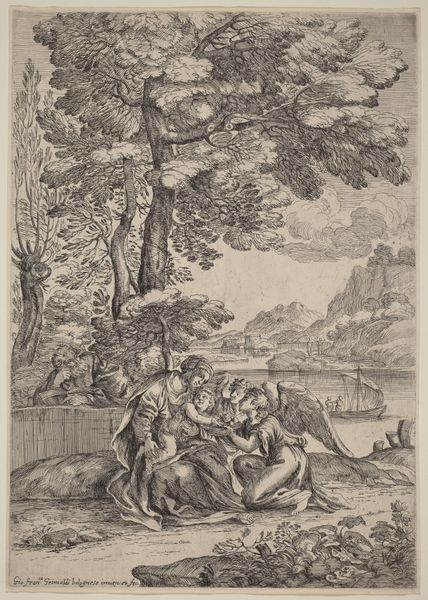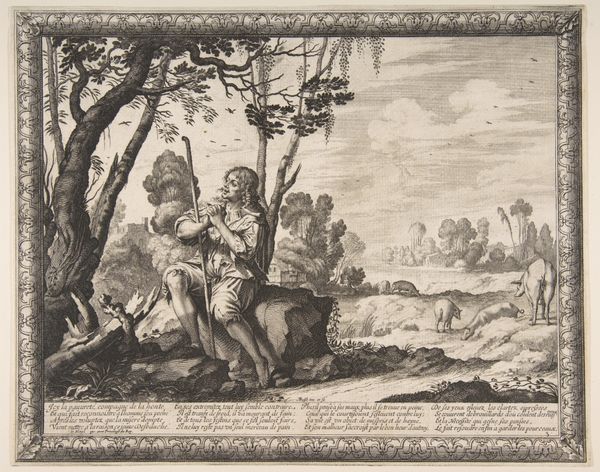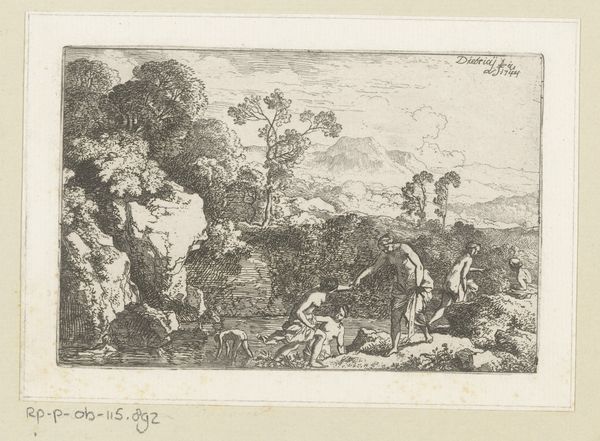
Six nymphs and two putti, from "Bacchanals and Histories" 1744
0:00
0:00
drawing, print, engraving
#
drawing
#
allegory
#
baroque
# print
#
landscape
#
figuration
#
engraving
Dimensions: Plate: 11 1/8 × 15 11/16 in. (28.3 × 39.8 cm) Sheet: 11 5/16 × 15 13/16 in. (28.8 × 40.1 cm)
Copyright: Public Domain
Curator: Immediately striking – an oddly unsettling scene rendered with an exquisite, almost fragile precision. Editor: This is “Six Nymphs and two Putti, from ‘Bacchanals and Histories,’” an engraving by Francesco Fontebasso, created around 1744. It resides here at The Met. The method is quite fascinating if you look at the density of line work used to construct tone and shadow. The layering, one almost sees it as a pre-photographic form. Curator: The sensuality juxtaposed with what looks like ancient ruins makes for a curious dynamic. I read a sort of melancholic comment on the transience of beauty. This harkens back to so many portrayals that mythologized violence against women, nymphs particularly, and those who lived on the peripheries of the established culture and power structures. Editor: True. Fontebasso was working in a time and within systems where the objectification of the female form was not only normalized but commodified through images exactly like these. Think about the physical process of etching and engraving, the laborious transferring and re-creating an idea into a replicable product. Prints were integral to disseminating ideologies and aesthetics, shaping tastes and reinforcing societal norms. Curator: I can't ignore the materiality itself - the paper, the ink, the physical act of printing and distribution, really. It underscores how these seemingly ethereal scenes were so deeply embedded in the economic and cultural fabric of 18th-century life, circulating and influencing perception and belief through an established consumer infrastructure. Editor: Look closely, and there is so much going on that speaks to the visual economy of baroque ideals and artistic values. The classical theme provides this illusion of respectability, while the intimate groupings of figures and subtle cues, the nymphs' relaxed state, invite the male gaze into a fabricated scenario, really a sexual fantasy disguised as high art. It's crucial to examine such images not only for their artistic skill, but also to decipher the implicit power dynamics. Curator: Indeed. Analyzing the networks of production and dissemination helps expose how art functioned as both aesthetic object and tool for maintaining and propagating social order, shaping our perceptions of each other, power structures, beauty and ultimately exploitation. Editor: Reflecting on it, I come away viewing it as a looking glass—a portal—into a historical matrix of artistic expression, cultural beliefs, and persistent power structures. A challenge, then, to decode not only the narrative of nymphs and putti but of the silent stories behind who had the power to depict, sell, and consume such representations.
Comments
No comments
Be the first to comment and join the conversation on the ultimate creative platform.


